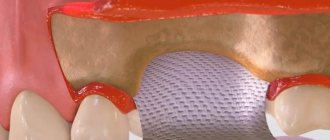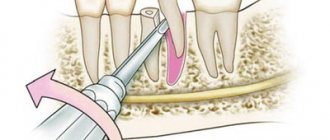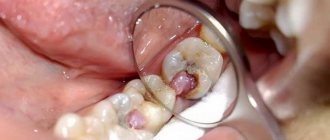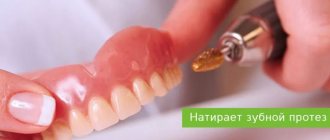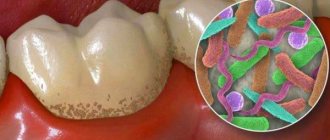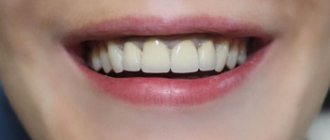Dental restoration solves not only functional problems, replacing lost teeth with artificial ones. Orthopedists attach no less importance to the aesthetic component of prosthetics. Functionality and aesthetics are combined by the use of artificial gums.
Most often, this design is used in the manufacture of removable dentures. The crowns are fixed to the base, creating a complete imitation of the gums and teeth in it. The materials for such products are polymers: acrylic, nylon, AcryFree. The last two are hypoallergenic, but acrylic can cause an allergic reaction. Teeth on artificial gums transfer part of the load to the base, but this distribution is uneven. Adequate distribution is only possible with implant prosthetics.
Functions of artificial gum in implant-supported dentures
In removable dentures, artificial gum is a mandatory element. When the structures are simply fixed on the gums, the artificial gum provides additional fixation because it tightly grips the alveolar ridge.
In the case when the prosthesis is installed on implants, fastening elements are located inside it, just under the gum, on the back side of the dental crowns. Therefore, artificial gum helps to hide them, allowing you to give the dentition a sick aesthetic.
In some cases, doctors insist on adding artificial gum even to permanent dentures . Naturally, this surprises patients. But the gums also play a role, especially with extensive tooth loss or complete edentia. Dental crowns are used to fill the dentition, but artificial gums are used to fill the height of the bite.
This option is applicable for situations where, as a result of a long absence of teeth, your bone tissue has noticeably decreased in volume - the level of the gums, naturally, has fallen. And in order for the dentition to be even, you will have to either build up the bone to the required volume, or choose basal implants that are fixed in the existing bone volume, but then the prosthesis will have a small part of the gum. In addition, if the cause of tooth loss is diseases such as periodontitis or periodontitis, in which the tissues atrophy unevenly, with prosthetics without artificial gums it would be necessary to make crowns that differ significantly in height, which would be completely unsatisfactory from an aesthetic point of view. If bone atrophy is not significant, then the prosthesis is made without artificial gum.
General overview
One of the tasks of prosthetics is to create a structure that does not differ in appearance from natural tissues and tooth enamel. This also applies to the mucous membrane of the area adjacent to the surgical site. Artificial gum performs both aesthetic and supporting functions, allowing the jaw to return an attractive appearance even in situations where the patient has been diagnosed with extensive edentia.
Quite often there are situations when the consequence of poor-quality dental treatment is the development of atrophic processes that affect not only soft tissues, but also the spongy structure in those areas where voids are localized. The use of a prosthetic element of this category is distinguished not only by the loyalty of the method used in terms of the degree of intervention in the body, but also by the minimal time and financial costs that the patient is forced to face.
Classical implantation with bone tissue augmentation
To install implants of a standard classic type, a sufficient amount of bone tissue is required. In this case, you receive a denture without artificial gums, consisting solely of dental crowns. But you will lose in the following:
- the cost of treatment will increase: since the augmentation operation costs some money, besides, classical implantation is almost twice as expensive as the basal method,
- the treatment period will increase: at least three months are needed to restore the bone after augmentation and the same amount more for the complete engraftment of the implants, only after this it will be possible to install a permanent prosthesis
What is a gum former: photo
Many sites that describe the step-by-step process of implantation often do not mention this element, because it is often confused with an abutment, which is a serious mistake. You can look at what a gum former looks like on the Internet or ask your doctor to show it to you. The procedure does not take much time; after the implant is implanted, this structure is installed on it. Then the doctor sutures the wounds, but the former must remain on top of the gingival contour. It is made from special metals, usually titanium, which makes it hypoallergenic and has a low risk of rejection. Titanium alloy is corrosion-resistant and lightweight, it does not load the implant. Its size directly depends on the type of tooth being restored. The main purpose of this device is the formation of soft tissue around the titanium root, so that later the connection between the prosthesis and the gums looks natural and aesthetically pleasing. After its use, it acquires the desired density and volume.
Expert opinion
Roman Borisovich Alekperov
orthopedic dentist
Experience: 24 years
Although artificial gum helps distribute the load on the jawbone, this distribution is not uniform. This means that over time, atrophic dentures will inevitably develop under the removable denture, the bone will sag, the denture will become uncomfortable, no longer fit, or may even break during chewing. How to prevent the development of bone deficiency? Only with the help of implantation! If you decide to install implants after the tissue has begun to “go away,” take advantage of the possibilities of basal implantation.
Gum former: how long does it take to heal?
When implanting a gum former, how long it takes for periodontal tissue to heal depends on several factors:
- patient compliance with recommendations;
- location of prosthetics, on the upper or lower jaw, type of tooth;
- type of implant.
The formation of the gingival margin is not a quick process; in order to get an excellent result, it is necessary to regularly care for the oral cavity and follow the doctor’s instructions until the process of soft tissue regeneration is completed. If the gum does not heal, and its recovery is accompanied by discomfort and complications, then it is necessary to consult with your doctor. You should not try to eliminate painful symptoms on your own; even mild discomfort may indicate the development of inflammation. Because of this, dental implantation will have to be postponed indefinitely.
ROOTT implantation with immediate loading WITHOUT bone tissue augmentation
During ROOTT express implantation, specially designed implants are used, which eliminate the need for bone augmentation. They are fixed in the deepest layer of bone tissue (basal section), which is not subject to atrophy even after several years of missing teeth. As a result, the implants are securely attached and can withstand maximum loads for many decades. But you get a denture with a small piece of artificial gum. But you save in the following:
- the treatment period is reduced: the implants have a solid structure (the tip after installation remains above the gum level) and excellent primary stability, so immediate loading is allowed already 2-3 days after surgery. And due to the usual pressure, bone cells grow as quickly as possible around the installed implant.
- the cost of treatment is reduced: since augmentation surgery is not required, the number of treatment stages is reduced. Due to the reduction in treatment time, the cost is also reduced - when restoring completely lost teeth in two jaws, it is almost two times lower than the classical protocol,
Let us note that today artificial gums are made from modern materials and are matched in shade to the color of natural gums. As a result, the prosthesis is very thin, does not cause discomfort and is completely invisible to others.
Why do my gums hurt after inserting a gum former?
Very often, patients come to the clinic after surgery with a complaint of pain. Should I panic in this case and immediately call a doctor? To answer this question, you need to determine the cause of your anxiety. Before starting the operation, the doctor gives the patient an injection with an anesthetic, so the patient does not feel pain during the entire process. When the anesthesia wears off, pain may occur and continue for several days after implantation. This is quite normal, while the soft tissues are healing and your body is adapting, you may be bothered by this symptom. If the pain does not go away within a week and only intensifies, causing you discomfort, then you should urgently seek help from a doctor. Monitor your condition carefully; some changes may indicate the development of complications. Based on this, we can conclude that if your gums hurt after installing a gum former, then you should not immediately sound the alarm, assess your condition and how long the pain lasts. If complaints arise immediately after the end of anesthesia, then you should wait a few days. The discomfort will either pass or begin to bother you with renewed vigor, in which case you should contact your doctor.
Preparing for surgery
Gingivoplasty requires preliminary preparation of the patient. Before the procedure, the doctor must conduct laboratory tests and studies. For example:
- determination of prothrombin in the blood;
- blood sugar levels;
- HIV test;
- cardiac echocardiography;
- coagulogram.
Depending on the results obtained, additional specialist consultations may be required.
It is better to take an accompanying person with you for the operation itself, as it is performed under anesthesia. Those who have had gum grafting know that applying an ice pack to the injured area is very useful.
Before visiting the hospital, it is not advisable to overeat; it is enough to have a light snack. It is prohibited to drink alcohol a week before the procedure. Clothing must be without a collar.
Doctor's recommendations for care after plastic surgery
Full recovery after surgery takes up to two weeks on average, sometimes more. It all depends on the individual characteristics of the human body, regenerative abilities, and compliance with doctor’s recommendations.
The list of appointments includes the following items:
- taking painkillers and antibacterial drugs as indicated;
- lack of physical activity;
- refusal to visit the bathhouse, sauna;
- eating non-hot food with a semi-liquid consistency;
- exclusion of spicy and sour foods from the diet;
- maintaining careful oral hygiene (carefully brushing your teeth with a soft-bristled brush, avoiding the slightest contact with the stitched area);
- performing mouth rinses;
- wearing a special mouth guard to protect the operated area.
Usually after gingivoplasty there is swelling that goes away within 3-4 days. At first it increases, then gradually decreases. If there is no improvement, you should inform your doctor.
What complications may arise?
Sometimes after gingivoplasty the following may appear:
- severe sensitivity of surrounding tissues;
- the appearance of edema;
- painful sensations.
The listed side effects are easily eliminated or go away on their own as they heal.
Another negative consequence of the operation may be an allergic reaction to the anesthetic. If you are prone to allergies, it is better to notify your doctor in advance and get tested.
- Complete restoration of the dentition in just 4 days!
more detailsRoott Pterygoid Implants Sinus lift is no longer needed!
more details
Once and for life! Express implantation in 4 days with a permanent ReSmile prosthesis
more details
All-on-4, All-on-6, ReSmile, Zygomatic implantation We use all modern methods of dentition restoration
more details

